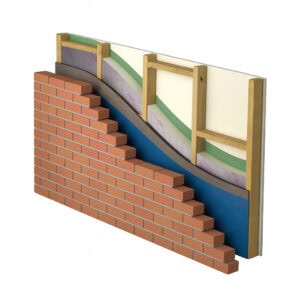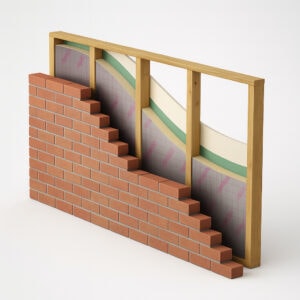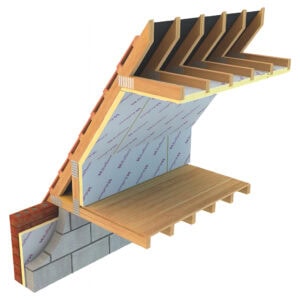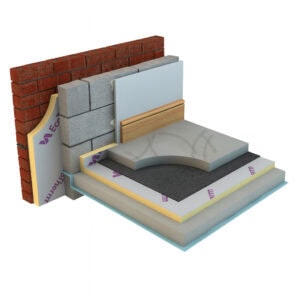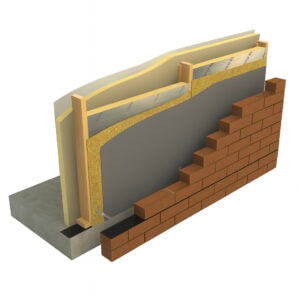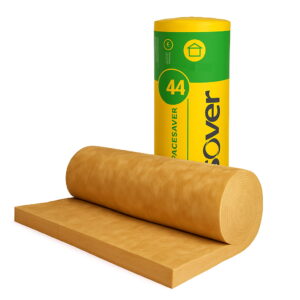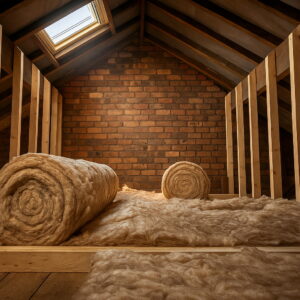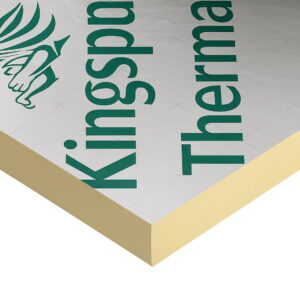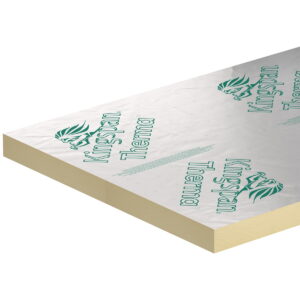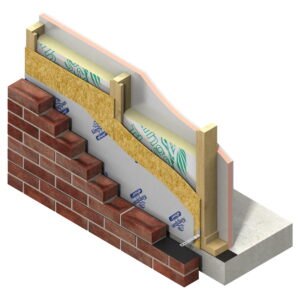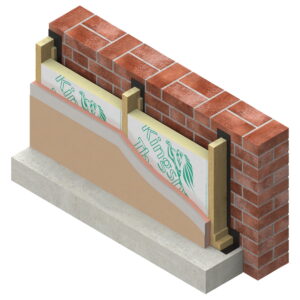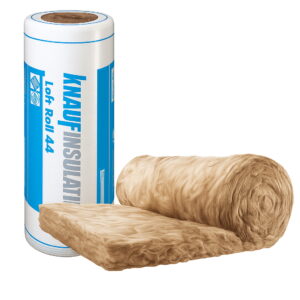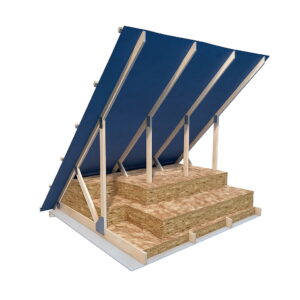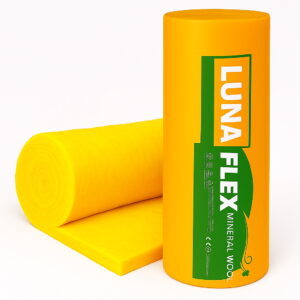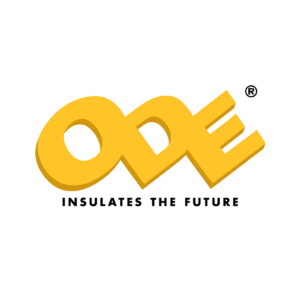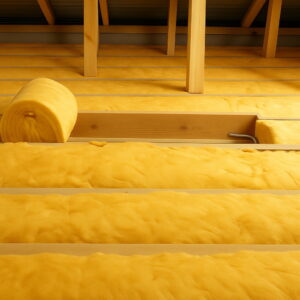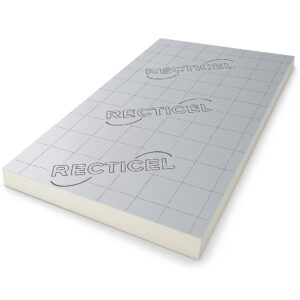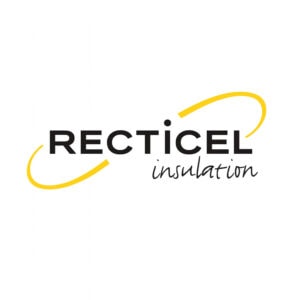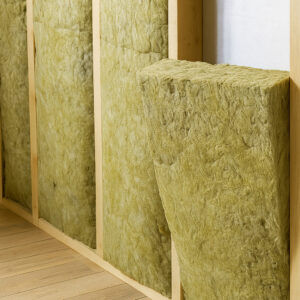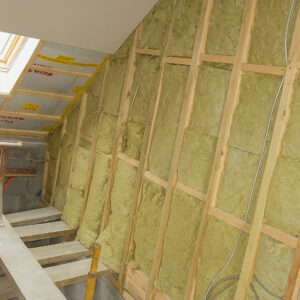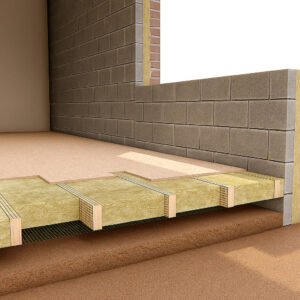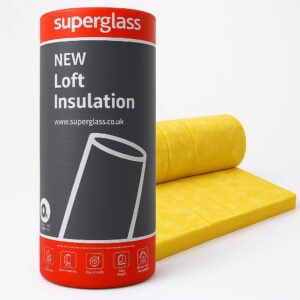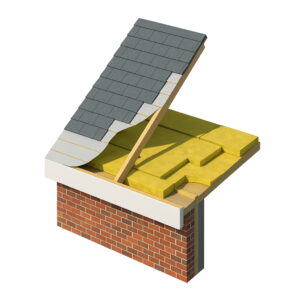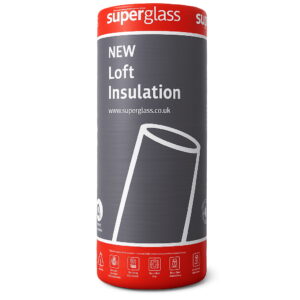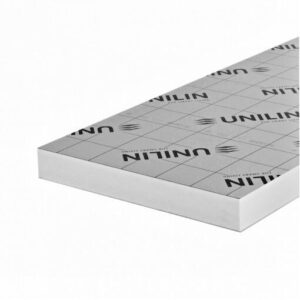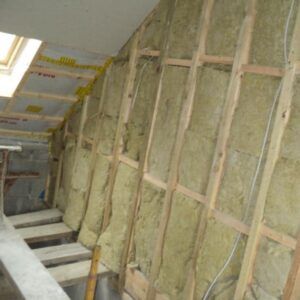Loft Insulation
Increasing your home’s energy efficiency is crucial to achieving a better quality of life. If you are looking at loft insulation costs, then you are making a solid investment, as it is an outstandingly great way to prevent heat loss and considerably reduce your heating bills.
What is Loft Insulation?
Loft insulation is a vital component of a well-insulated home. It acts as a barrier against heat loss, preventing the escape of warmth from living spaces during colder seasons. Alongside reducing thermal loss, loft insulation helps to improve energy efficiency. It can be made from various materials, including fibreglass, cellulose, and rock wool. The effectiveness of the insulation depends on the thickness and density of the material used.
Types of Loft Insulation
There is a wide range of loft insulation, each with unique features. Some are designed to enhance thermal performance, while others improve acoustics or insulate between rafters. The type of insulation you choose depends on the intended use of your loft space and whether you need warm or cold roof insulation.
Insulation slab. This type of insulation is made of mineral wool and comes in pre-cut rectangular pieces. It is designed to fit between the joists of your loft space. Insulation slabs are easy to handle and install, making them popular for DIY projects. They are also relatively affordable.
Insulation roll. Insulation rolls are similar to insulation slabs but come in long rolls that can be cut to size. They are typically made of mineral wool and are designed to fit between the joists of your loft space. Insulation rolls are a good choice if you have ample loft space to insulate, as they can be quickly and easily handled.
Insulation board. When selecting the best loft insulation, insulation boards are the most preferable. Made of rigid foam, they are designed to be fixed to the underside of your loft space’s roof. They are ideal for various uses and provide perfect insulation while reducing heat loss through your roof. Insulation boards are also a good choice if you plan to use your loft space as a living area, as they can help to create a more comfortable environment.
What is loft insulation made of?
Loft insulation is typically made from various materials, each offering unique characteristics. Below are commonly used materials for loft insulation:
Glass wool: Glass wool insulation is made from recycled glass that is melted and spun into fibres. It is lightweight and easy to install. Glass wool provides effective insulation against energy loss and is a popular choice for loft insulation.
PIR board: PIR insulation board is a type of rigid insulation that is easy to cut and simple to install. Each board has an additional foil or a mineral glass coating, which helps it resist fire damage. PIR insulation boards do not sag or become flimsy over time, making them an ideal choice for loft insulation.
Phenolic foam: Phenolic insulation is a fire-resistant rigid insulation with high thermal performance and low environmental impact. It is used in various applications and is especially suitable for use in areas where fire safety is a concern.
Multifoil insulation: Foiled-based is a type of insulation which is composed of multiple layers of sheets and insulating materials. It is perfect for loft and tight spaces as it is one of the thinnest materials. Its flexibility makes it easy to install in irregular areas with minor damage to walls or ceilings.
Mineral Wool: Mineral wool is a form of insulation material made from mineral fibres that come from rocks or industrial by-products. Mineral wool effectively reduces heat transfer and noise transmission due to its robust thermal insulation and sound absorption characteristics. It is also resistant to moisture, pests, mould, and bacteria and is commonly used on walls, roofs, and floors in residential and commercial buildings.
How Much is Loft Insulation?
The cost of loft insulation can vary depending on factors such as the size of the loft, the type and thickness of insulation material, and whether it is a DIY project or professionally installed. On average, insulating a loft costs from £500 to £1500. Using foam insulation will cost about £35 for the materials per m² and £250 per day for labour. The lack of required skilled specialists and the equipment available for traditional insulation determines this.
It is essential to consider loft insulation as a long-term investment. Although the initial cost may seem significant, it can lead to substantial savings on energy bills over time. The exact payback period will depend on factors such as the energy cost, the insulation level installed, and the heating system’s efficiency.
Benefits of Loft Insulation
Loft insulation provides other crucial advantages besides apparent benefits, including reduced energy consumption and cost-efficiency.
Improved energy efficiency and lower energy bills are the key benefits of insulation. Using energy-efficient appliances, LED lighting, and renewable energy sources makes it possible for you to keep heat inside a building while reducing energy consumption and lowering energy bills.
Improved indoor comfort and temperature control are other benefits of insulation. Insulation helps to regulate the temperature inside a building, keeping it warmer in the winter and cooler in the summer.
Reduced carbon footprint: by reducing energy consumption, you can lower your carbon emissions and minimise the environmental impact. This can be achieved when using renewable energy sources and energy-efficient appliances.
Increased property value: Insulation is an attractive feature, as it can improve energy efficiency and indoor comfort. This, in turn, can increase property value and resale potential, making it a worthwhile investment.
How to Insulate a Loft?
Loft insulation can be a relatively straightforward process, and it can be done as a DIY project or by hiring a professional. Below is a general guide for insulating a loft:
- Space preparation: Clear the loft of unnecessary items and debris to create a clean working area. Ensure that any potential sources of dampness, such as leaks or condensation, are addressed before proceeding with the insulation.
- Measurements: Measure the area of your loft to determine the insulation material you need. This will depend on the type of insulation and its recommended thickness.
- Insulation material: Select the type of insulation material that best suits your needs and budget. Consider factors such as thermal performance, environmental impact, and ease of installation.
- Insulating the floor (Cold Loft): If opting for cold loft insulation, lay insulation rolls or batts between the loft joists, ensuring a snug fit and complete coverage of the loft floor. Be careful not to compress the insulation, as this can reduce its effectiveness.
- Insulating the roof (Warm Loft, if applicable): When converting the loft into a heated living space, insulation must be installed on the underside of the roof. This can involve fixing insulation boards or applying insulation blanket rolls directly to the roof’s slope, ensuring proper coverage.
- Sealing gaps and hatches: To maximise insulation effectiveness, fill holes or cracks in the loft, particularly around pipes, vents, and electrical wiring. Install insulation strips or blankets around the loft hatch to prevent heat loss through these openings.
- Professional assistance: If you need clarification on the process or if your loft has complex features, it’s advisable to consult a professional insulation installer. They have the expertise and tools to complete the job efficiently and effectively.
Conclusion
Loft insulation effectively improves energy efficiency, reduces heat loss, and saves money on energy bills. Our prepared guide to loft insulation will give you a better understanding of the factors involved.
To select the unique product you need from our brand assortment, please contact us at 0203 318 7316, and our knowledgeable team members will help you to make the right choice.
Showing 1–32 of 156 results
-
100mm Celotex GA4100 PIR Insulation Board 2400mm x 1200mm (8′ x 4′) 2.88m2
100mm Celotex GA4100 is a polyisocyanurate (PIR) insulation core with composite aluminium foil facings on both sides. Celotex is a multi-purpose insulation board suitable for use in pitched roofs, ceilings, floors and walls.
£24.38£29.26 Ex VATInc VAT£8.47£10.16 Per M2 Add to cart -
100mm Ecotherm Eco-Versal Rigid PIR Insulation Board 2400mm x 1200mm (8′ x 4′) 2.88m2
100mm Ecotherm Eco-Versal is a polyisocyanurate (PIR) insulation core with composite aluminium foil facings on both sides. Ecotherm Eco-Versal is a multi-purpose insulation board suitable for use in pitched roofs, ceilings, floors and walls.
£24.97£29.96 Ex VATInc VAT£8.67£10.40 Per M2 Add to cart -
100mm Isover Spacesaver Insulation Loft Roll 14.13m2
100mm Isover Spacesaver Insulation Loft Roll is an efficient and easy-to-install solution for insulating loft spaces, designed to enhance energy efficiency and home comfort.
£29.87£35.84 Ex VATInc VAT£2.11£2.53 Per m2 Add to cart -
100mm Kingspan Therma TP10 / TF70 / TW55 PIR Insulation Board 2400mm x 1200mm (8′ x 4′) Pack of 3 (8.64m2)
All three models 100mm Kingspan Therma PIR Insulation Board:
- 100mm Thermapitch TP10
- 100mm Thermafloor TF70
- 100mm Thermawall TW55
share the same high-performance PIR core and low-emissivity foil facings, offering excellent thermal efficiency and easy installation. Although labeled differently, these boards share identical technical specifications.
£106.08£127.30 Ex VATInc VAT£12.28£14.74 Per M2 Add to cart -
100mm Knauf Insulation Loft Roll 44 Combi-Cut 13.89m2 Roll
Knauf Insulation Loft Roll 44 is a non-combustible glass mineral wool roll supplied in a Combi-Cut format. It is designed for use in cold lofts. Manufactured using Knauf Insulation’s unique bio-based binder, ECOSE® Technology.
£28.50£34.20 Ex VATInc VAT£2.05£2.46 Per m2 Add to cart -
100mm ODE Insulation Loft Roll 10.83m2
100mm ODE Insulation Loft Roll is a highly effective thermal loft solution for improving home energy efficiency. Made from eco-friendly materials, it offers a simple and effective way to improve comfort while lowering energy costs.
£19.36£23.23 Ex VATInc VAT£1.79£2.15 Per m2 Add to cart -
100mm Recticel Eurothane GP PIR Insulation Board 2400mm x 1200mm (8′ x 4′) 2.88m2
100mm Recticel Eurothane GP is a polyisocyanurate (PIR) insulation core with composite aluminium foil facings on both sides. Recticel is a multi-purpose insulation board suitable for use in pitched roofs, ceilings, floors and walls.
£24.97£29.96 Ex VATInc VAT£8.67£10.40 Per M2 Add to cart -
100mm Rockwool Flexi Slab Acoustic Insulation 1200mm x 600mm 4.32m2 Pack
100mm Rockwool Flexi has been designed as a multi-use, dual-purpose acoustic and thermal mineral wool insulation with a unique flexible edge along one side. It is suitable for use all over the home, in pitched roof rafters, framed external walls, internal partitions, intermediate floors, separating walls and floors, and timber suspended ground floors.
£38.91£46.69 Ex VATInc VAT£9.01£10.81 Per m2 Add to cart -
100mm Rockwool RWA45 Acoustic Insulation Slab 1200 x 600mm 2.88m2 Pack
100mm Rockwool RWA45 has been developed for thermal, acoustic and fire performance in a range of construction types. It is suitable for applications on partition walls, ceilings, floors and roofs.
£21.02£25.22 Ex VATInc VAT£7.30£8.76 Per m2 Add to cart -
100mm Superglass 44 Multi Loft Roll Insulation 12.12m2 Roll
Multi-Roll 44 is a lightweight, non-combustible glass mineral wool roll, designed to provide thermal insulation in lofts. This roll is typically used for insulating loft spaces and cold roofs but can also be used in a multitude of different applications.
£25.49£30.59 Ex VATInc VAT£2.10£2.52 Per m2 Add to cart -
110mm Celotex XR4110 PIR Insulation Board 2400mm x 1200mm (8′ x 4′) 2.88m2
110mm Celotex XR4110 is a polyisocyanurate (PIR) insulation core with composite aluminium foil facings on both sides. Celotex is a multi-purpose insulation board suitable for use in pitched roofs, ceilings, floors and walls.
£30.69£36.83 Ex VATInc VAT£10.66£12.79 Per M2 Add to cart -
110mm Ecotherm Eco-Versal Rigid PIR Insulation Board 2400mm x 1200mm (8′ x 4′) 2.88m2
110mm Ecotherm Eco-Versal is a polyisocyanurate (PIR) insulation core with composite aluminium foil facings on both sides. Ecotherm Eco-Versal is a multi-purpose insulation board suitable for use in pitched roofs, ceilings, floors and walls.
£32.15£38.58 Ex VATInc VAT£11.16£13.39 Per M2 Add to cart -
110mm Recticel Eurothane GP PIR Insulation Board 2400mm x 1200mm (8′ x 4′) 2.88m2
110mm Recticel Eurothane GP is a polyisocyanurate (PIR) insulation core with composite aluminium foil facings on both sides. Recticel is a multi-purpose insulation board suitable for use in pitched roofs, ceilings, floors and walls.
£32.15£38.58 Ex VATInc VAT£11.16£13.39 Per M2 Add to cart -
110mm Unilin Thin-R PIR Insulation Board 2400mm x 1200mm (8′ x 4′) Pallet of 21 (60.48m2)
110mm Unilin Thin-R PIR insulation is a foil faced, high-performance insulation solution that offers exceptional thermal efficiency and durability. This polyisocyanurate insulation board, formerly known as Xtratherm, is ideal for a range of applications, such as floors, pitched roofs, and walls.
POA Get a quote -
120mm Celotex XR4120 PIR Insulation Board 2400mm x 1200mm (8′ x 4′) 2.88m2
120mm Celotex XR4120 is a polyisocyanurate (PIR) insulation core with composite aluminium foil facings on both sides. Celotex is a multi-purpose insulation board suitable for use in pitched roofs, ceilings, floors and walls.
£30.27£36.32 Ex VATInc VAT£10.51£12.61 Per M2 Add to cart -
120mm Ecotherm Eco-Versal Rigid PIR Insulation Board 2400mm x 1200mm (8′ x 4′) 2.88m2
120mm Ecotherm Eco-Versal is a polyisocyanurate (PIR) insulation core with composite aluminium foil facings on both sides. Ecotherm Eco-Versal is a multi-purpose insulation board suitable for use in pitched roofs, ceilings, floors and walls.
£30.37£36.44 Ex VATInc VAT£10.55£12.66 Per M2 Add to cart -
120mm Kingspan Therma TP10 / TF70 / TW55 PIR Insulation Board 2400mm x 1200mm (8′ x 4′) Pack of 2 (5.76m2)
All three models 120mm Kingspan Therma PIR Insulation Board:
- 120mm Thermapitch TP10
- 120mm Thermafloor TF70
- 120mm Thermawall TW55
share the same high-performance PIR core and low-emissivity foil facings, offering excellent thermal efficiency and easy installation. Although labeled differently, these boards share identical technical specifications.
£101.18£121.42 Ex VATInc VAT£17.57£21.08 Per M2 Add to cart -
120mm Recticel Eurothane GP PIR Insulation Board 2400mm x 1200mm (8′ x 4′) 2.88m2
120mm Recticel Eurothane GP is a polyisocyanurate (PIR) insulation core with composite aluminium foil facings on both sides. Recticel is a multi-purpose insulation board suitable for use in pitched roofs, ceilings, floors and walls.
£30.37£36.44 Ex VATInc VAT£10.55£12.66 Per M2 Add to cart -
125mm Ecotherm Eco-Versal Rigid PIR Insulation Board 2400mm x 1200mm (8′ x 4′) 2.88m2
125mm Ecotherm Eco-Versal is a polyisocyanurate (PIR) insulation core with composite aluminium foil facings on both sides. Ecotherm Eco-Versal is a multi-purpose insulation board suitable for use in pitched roofs, ceilings, floors and walls.
£43.75£52.50 Ex VATInc VAT£15.19£18.23 Per M2 Add to cartWould you be happy to accept alternative product? -
125mm Kingspan Therma TP10 / TF70 / TW55 PIR Insulation Board 2400mm x 1200mm (8′ x 4′) Pack of 2 (5.76m2)
All three models 20mm Kingspan Therma PIR Insulation Board:
- 125mm Thermapitch TP10
- 125mm Thermafloor TF70
- 125mm Thermawall TW55
share the same high-performance PIR core and low-emissivity foil facings, offering excellent thermal efficiency and easy installation. Although labeled differently, these boards share identical technical specifications.
£116.87£140.24 Ex VATInc VAT£20.29£24.35 Per M2 Add to cart -
130mm Celotex XR4130 PIR Insulation Board 2400mm x 1200mm (8′ x 4′) 2.88m2
130mm Celotex XR4130 is a polyisocyanurate (PIR) insulation core with composite aluminium foil facings on both sides. Celotex is a multi-purpose insulation board suitable for use in pitched roofs, ceilings, floors and walls.
£37.00£44.40 Ex VATInc VAT£12.85£15.42 Per M2 Add to cart -
130mm Ecotherm Eco-Versal Rigid PIR Insulation Board 2400mm x 1200mm (8′ x 4′) 2.88m2
130mm Ecotherm Eco-Versal is a polyisocyanurate (PIR) insulation core with composite aluminium foil facings on both sides. Ecotherm Eco-Versal is a multi-purpose insulation board suitable for use in pitched roofs, ceilings, floors and walls.
£37.48£44.98 Ex VATInc VAT£13.01£15.61 Per M2 Add to cart -
130mm Recticel Eurothane GP PIR Insulation Board 2400mm x 1200mm (8′ x 4′) 2.88m2
130mm Recticel Eurothane GP is a polyisocyanurate (PIR) insulation core with composite aluminium foil facings on both sides. Recticel is a multi-purpose insulation board suitable for use in pitched roofs, ceilings, floors and walls.
£36.99£44.39 Ex VATInc VAT£12.84£15.41 Per M2 Add to cart -
140mm Celotex XR4140 PIR Insulation Board 2400mm x 1200mm (8′ x 4′) 2.88m2
140mm Celotex XR4140 is a polyisocyanurate (PIR) insulation core with composite aluminium foil facings on both sides. Celotex is a multi-purpose insulation board suitable for use in pitched roofs, ceilings, floors and walls.
£37.59£45.11 Ex VATInc VAT£13.05£15.66 Per M2 Add to cart -
140mm Kingspan Therma TP10 / TF70 / TW55 PIR Insulation Board 2400mm x 1200mm (8′ x 4′) Pack of 2 (5.76m2)
All three models 140mm Kingspan Therma PIR Insulation Board:
- 140mm Thermapitch TP10
- 140mm Thermafloor TF70
- 140mm Thermawall TW55
share the same high-performance PIR core and low-emissivity foil facings, offering excellent thermal efficiency and easy installation. Although labeled differently, these boards share identical technical specifications.
£126.49£151.79 Ex VATInc VAT£21.96£26.35 Per M2 Add to cart -
140mm Recticel Eurothane GP PIR Insulation Board 2400mm x 1200mm (8′ x 4′) 2.88m2
140mm Recticel Eurothane GP is a polyisocyanurate (PIR) insulation core with composite aluminium foil facings on both sides. Recticel is a multi-purpose insulation board suitable for use in pitched roofs, ceilings, floors and walls.
£37.59£45.11 Ex VATInc VAT£13.05£15.66 Per M2 Add to cart -
140mm Rockwool Flexi Slab Acoustic Insulation 1200mm x 600mm 2.88m2 Pack
140mm Rockwool Flexi has been designed as a multi-use, dual-purpose acoustic and thermal mineral wool insulation with a unique flexible edge along one side. It is suitable for use all over the home, in pitched roof rafters, framed external walls, internal partitions, intermediate floors, separating walls and floors, and timber suspended ground floors.
£35.61£42.73 Ex VATInc VAT£12.36£14.83 Per m2 Add to cart -
150mm Celotex XR4150 PIR Insulation Board 2400mm x 1200mm (8′ x 4′) 2.88m2
150mm Celotex XR4150 is a polyisocyanurate (PIR) insulation core with composite aluminium foil facings on both sides. Celotex is a multi-purpose insulation board suitable for use in pitched roofs, ceilings, floors and walls.
£36.83£44.20 Ex VATInc VAT£12.79£15.35 Per M2 Add to cart -
150mm Ecotherm Eco-Versal Rigid PIR Insulation Board 2400mm x 1200mm (8′ x 4′) 2.88m2
The 150mm Ecotherm Eco-Versal is a polyisocyanurate (PIR) insulation core with composite aluminium foil facings on both sides. Ecotherm Eco-Versal is a multi-purpose insulation board suitable for use in pitched roofs, ceilings, floors and walls.
£37.43£44.92 Ex VATInc VAT£13.00£15.60 Per M2 Add to cart -
150mm Isover Spacesaver Insulation Loft Roll 9.34m2
150mm Isover Spacesaver Insulation Loft Roll is an efficient and easy-to-install solution for insulating loft spaces, designed to enhance energy efficiency and home comfort.
£27.44£32.93 Ex VATInc VAT£2.94£3.53 Per m2 Add to cart -
150mm Kingspan Therma TP10 / TF70 / TW55 PIR Insulation Board 2400mm x 1200mm (8′ x 4′) Pack of 2 (5.76m2)
All three models 150mm Kingspan Therma PIR Insulation Board:
- 150mm Thermapitch TP10
- 150mm Thermafloor TF70
- 150mm Thermawall TW55
share the same high-performance PIR core and low-emissivity foil facings, offering excellent thermal efficiency and easy installation. Although labeled differently, these boards share identical technical specifications.
£126.74£152.09 Ex VATInc VAT£22.00£26.40 Per M2 Add to cart -
150mm Knauf Insulation Loft Roll 44 Combi-Cut 9.18m2 Roll
Knauf Insulation Loft Roll 44 is a non-combustible glass mineral wool roll supplied in a Combi-Cut format. It is designed for use in cold lofts. Manufactured using Knauf Insulation’s unique bio-based binder, ECOSE® Technology.
£28.41£34.09 Ex VATInc VAT£3.09£3.71 Per m2 Add to cart


